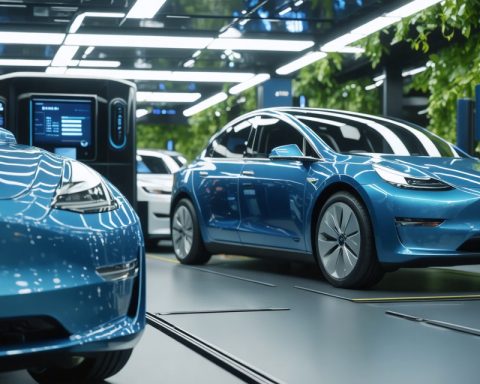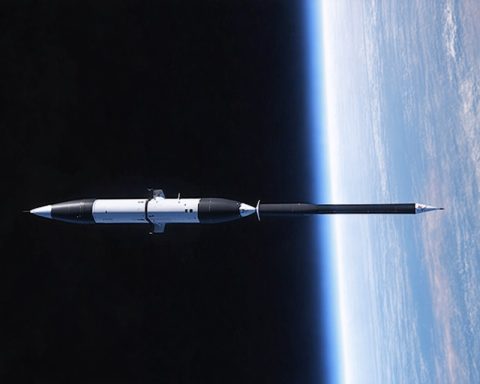The Thrilling Journey of the Starship
The recent launch of SpaceX’s Starship turned into an extraordinary visual spectacle, captivating onlookers in the Caribbean despite its ultimate failure. Launched from South Texas, the towering rocket, standing at 400 feet, encountered a dramatic malfunction just over eight minutes into its ascent, leading to what SpaceX described as a “rapid unscheduled disassembly.”
This was the seventh test flight for the Starship, which launched from the company’s Starbase in Boca Chica. Videos flooding social media showcased debris falling gracefully into the Atlantic Ocean, leaving spectators bewildered and questioning the nature of the incredible display. Many could be seen pointing skyward in awe, marveling at the unexpected fireworks above.
Elon Musk, the founder of SpaceX, added a touch of humor to the chaos by sharing the event online. He emphasized that, while success may be uncertain in rocket testing, the visual entertainment is always guaranteed.
However, not all was lost during the launch. SpaceX achieved a key milestone by successfully catching the rocket’s booster with its massive “chopsticks,” a feat that had recently been accomplished only during a previous test. Musk noted that upgraded versions of both the Starship and booster are ready for their next adventure, promising even more excitement on the horizon. As the world watches, the journey of the Starship continues to captivate and entertain.
Impacts on Society and the Global Economy
The ambitious pursuit of space exploration exemplified by SpaceX’s Starship program carries significant implications for society and the global economy. The endeavor symbolizes a new era of technological advancements and international collaboration. As the private space industry expands, it encourages innovation, leading to job creation and stimulating sectors from engineering to entertainment. The burgeoning market for satellite deployment alone is projected to reach $200 billion by 2025, fueled by commercial ventures and the increasing demand for global connectivity.
Culturally, space exploration serves as a symbol of human ingenuity. It inspires future generations, igniting interest in STEM fields (science, technology, engineering, and mathematics). Public engagement through social media and live broadcasts transforms space missions into communal events, allowing people worldwide to witness achievements and failures alike. This sense of shared experience fosters a cultural narrative around exploration, ambition, and the resilience to embrace failure.
From an environmental perspective, the growth of the space industry raises critical questions about its sustainability. The launch of rockets contributes to atmospheric pollution and space debris. As the global community increasingly emphasizes sustainable practices, future developments must prioritize green technologies. Innovations in propulsion and recycling materials in space could mitigate the environmental impacts associated with these exciting ventures.
Ultimately, the Starship’s journey is not merely about rockets reaching the stars; it reflects a broader vision of human potential that intertwines technology, culture, and a commitment to safeguarding our planet while we reach for new horizons.
Starship’s Launch: A Blend of Spectacle and Innovation
The Thrilling Journey of the Starship
The recent launch of SpaceX’s Starship has captured global attention, not just for its audacious mission, but also for its dramatic conclusion. Launched from South Texas, the rocket stands an impressive 400 feet tall and was meant to demonstrate advancements in space travel. However, the flight took a turn after experiencing a malfunction approximately eight minutes into its ascent, leading to what SpaceX referred to as a “rapid unscheduled disassembly.”
While the event was ultimately deemed a failure, it turned into an extraordinary visual spectacle for spectators in the Caribbean. Onlookers watched in awe as debris fell gracefully into the Atlantic Ocean. The incident quickly became viral on social media, with many recording the moments of the unexpected display of fireworks in the sky.
Pros and Cons of Starship’s Recent Test Flight
Pros:
– Visual Engagement: The launch provided a stunning visual feast, sparking excitement and interest in space exploration.
– Milestone Achieved: SpaceX successfully demonstrated its ability to catch the rocket’s booster using its innovative “chopsticks,” marking a significant step in recovery techniques for reusable rockets.
– Next Versions Ready: The company has upgraded versions of both the Starship and booster, suggesting improvements for future flights.
Cons:
– Launch Failure: The malfunction resulted in the destruction of the rocket, raising concerns about the reliability of such ambitious projects.
– Public Perception: While there was entertainment value, the failure may contribute to skepticism regarding SpaceX’s timelines and commitments.
Specifications and Innovations
Specifications:
– Height: 400 feet
– Launch Site: Boca Chica, South Texas
– Payload Capacity: Designed for carrying large payloads for missions to the Moon, Mars, and beyond.
Innovations:
– Booster Recovery: The use of the “chopsticks” system to catch the booster signifies advancements in making space travel more sustainable and economically viable by reusing rocket components.
Trends and Market Insights
SpaceX’s Starship program is at the forefront of a new era in space travel, with increasing interest from governmental and commercial sectors. As the company continues to refine its technology, it is expected that future launches will incorporate lessons learned from past experiences.
Security Aspects and Sustainability
As SpaceX aims for sustainability in space travel, the advanced recovery systems not only reduce waste but also cut costs significantly. Ensuring a secure and efficient launch environment is crucial for the long-term viability of commercial space exploration.
Looking Ahead: Predictions for Starship’s Future
Elon Musk has hinted at exciting developments on the horizon, with upgraded spacecraft poised for future missions. As SpaceX prepares for subsequent test flights, market analysts are optimistic about the potential successes that lie ahead, which could reshape our capabilities in space travel.
For more updates on space exploration and innovations, visit SpaceX.







